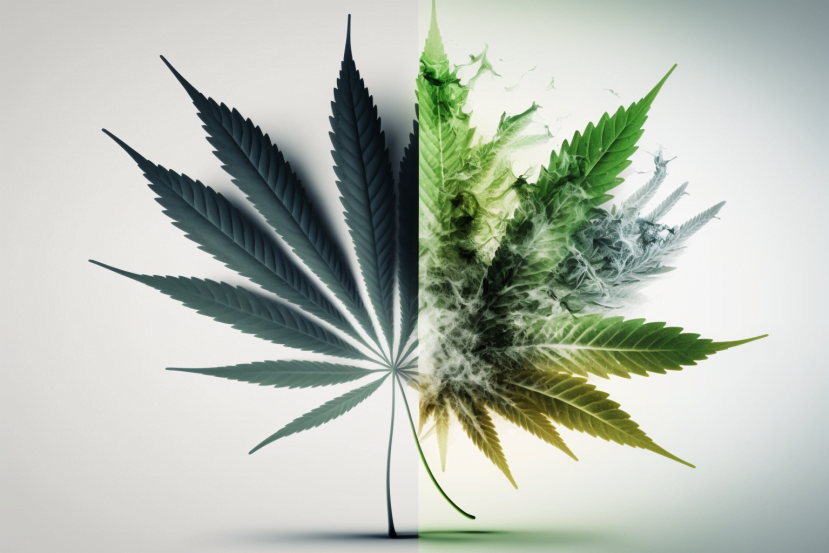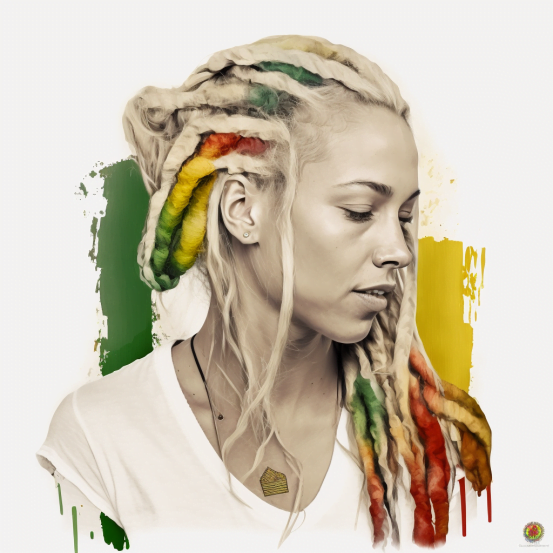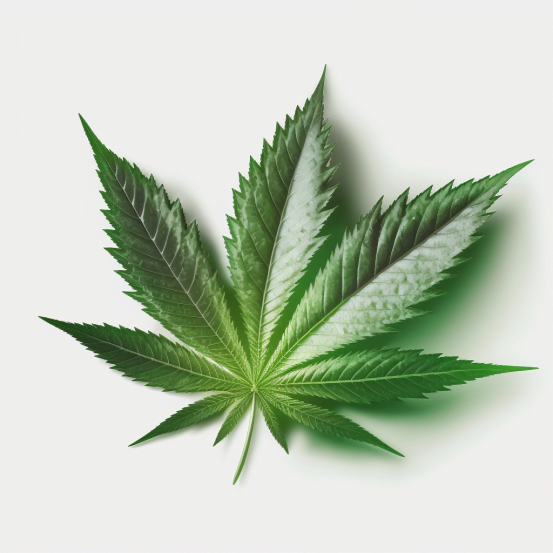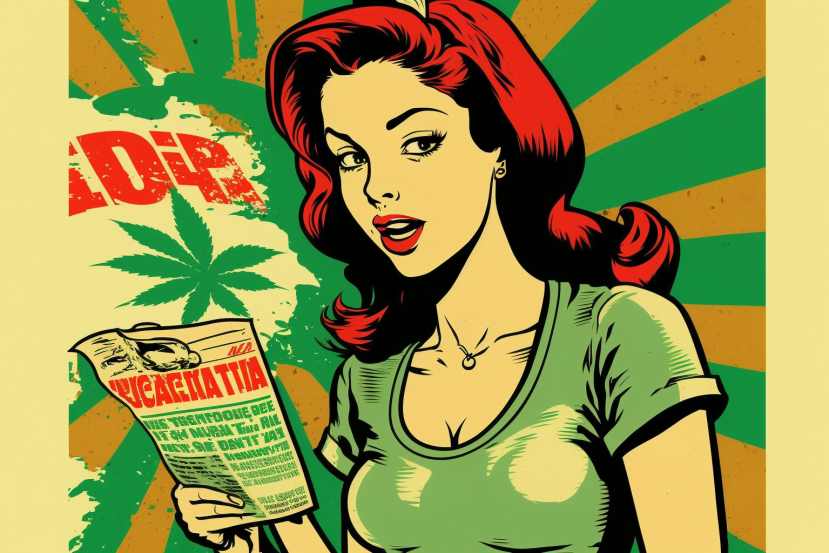English
Science points to a better way to determine the effect a cannabis varieties has on you: Cannabinoids and terpenes, the compounds that make up the chemical profile of a particular cannabis variety.
So why do smokers and budtenders alike still use indica, sativa and hybrids instead of the cannabinoid and terpene model?
There is a lot of pressure in the cannabis industry to discard the hybrid, indica and sativa classification system because it is not based on data and science – the terms are botanical names that refer to the structure of a plant, not the effects it produces.
However, most of the cannabis industry, including the shops where you buy marijuana, still clings to classifying cannabis varieties as indicas, sativas or hybrids for one main reason: it’s easy. Give a consumer three options – up, down or in-between – and you can easily explain what a particular cannabis variety feels like and sell a product. Like it or not, the classification system of indica, sativa and hybrids is still firmly entrenched in the world.
Both models have value, and consumers of all levels can use both. For an easier, more general way to pick a cannabis varieties and its effects, the hybrid, indica and sativa model may work for you. Once comfortable with cannabis, you may want to dig into the nuances of marijuana a bit more, and learn about chemical profiles, cannabinoids, and terpenes—our preferred method.
Let’s look at the differences between indicas and sativas, and the usefulness of the two classification systems.
Indica and Sativa – understanding the basics
The general understanding of indicas and sativas is that indica variety are physically calming and perfect for relaxing with a movie or as a nightcap before bed, while sativa varieties are stimulating and have an uplifting cerebral effect that goes well with physical activity, socialising and creative projects. Hybrid varieties are thought to have a mix of indica and sativa effects.
But indica doesn’t always mean “in da couch” and sativas don’t necessarily stimulate all consumers. The origins of the two terms are in botany, not effect, and describe the physical structure of a plant. In addition, everyone has different body chemistry, so one cannabis variety may affect each person differently.
Yet even today, the belief that indicas, sativas and hybrids have different effects is deeply ingrained in mainstream cannabis culture. If you’ve ever been to a dispensary, you’ve probably heard a budtender start a cannabis variety recommendation by asking which of cannabis variety you prefer.
The origin of Indica and Sativa
In 1753, Carl Linnaeus published Species Plantarum and assigned all cannabis plants to one group, “Cannabis sativa L.”, where “Cannabis” stands for the genus, “sativa” for the species and “L.” for Linnaeus’ system. “Sativa” comes from the Latin word “sativum”, which means “cultivated”.
The French biologist Jean-Baptiste Lamarck updated the naming in 1785 with two different species: “Cannabis sativa”, a taller, lankier and more fibrous plant, and “Cannabis indica”, a shorter, stockier and more psychoactive plant whose name means “from India”, where it was thought to have originated.
These definitions largely relate to the physical structure of the individual marijuana species and are still used today.
Cannabis Sativa
Sativas, which are usually considered stimulants, originally grew in warm, humid climates where they become long and lanky so they dry out and cannot absorb as much moisture. Their warm climate also means they take a long time to grow and flower or form buds because the weather doesn’t get cold and rainy at the end of the growing season.
Cannabis Indicas
Indicas are considered relaxing and were originally grown in cold, northern climates. Because of their environment, they grew short and dense, and their life cycle is shorter, so they can be harvested before the cold and wet of autumn and winter sets in.
Industrial Hemp
As an aside, what we call “hemp” refers to the industrial, non-intoxicating cannabis varieties that are harvested primarily for their fibres, seeds, CBD and novel cannabinoids like delta-8. The hemp fibres can be used to make materials and textiles, the seeds can be eaten, and CBD and other novel cannabinoids can be extracted from them. Legally, industrial hemp is any cannabis plant with less than 0.3% THC.
Hybrid, Indica and Sativa model is not accurate enough
Marijuana is incredibly nuanced. Each cannabis variety has its own chemical profile that interacts differently with each person’s body chemistry – the same cannabis variety can affect you and your buddy completely differently. The hybrid, indica and sativa model is a basic, quick and easy way to get a general idea of how a cannabis variety will affect you, but it’s not completely accurate and doesn’t explain the terpene profile or content of other cannabinoids of a cannabis variety.
How to use the Hybrid, Indica and Sativa method
You have had a long day and want to relax? You need to do some spring cleaning or finish a project? Talk to your local budtender, he will tell you:
- Indicas are calm and relaxing, ideal for unwinding at the end of the evening, watching a movie or listening to music, taking a nap or just staring at the wall.
- Sativas are energetic and make you productive. They are great for physical activities, hiking, doing chores, cleaning and anything that requires concentration.
- Hybrid varieties offer a mix of indica and sativa-like effects.
By and large, the idea that indicas are relaxing and sativas are energetic is consistent.
Most of the cannabis varieties in the “sleepy” and “relaxed” categories are indicas, while most of the “energetic” cannabis varieties are sativas.
Cannabinoids and terpenes
So if indica and sativa are not the best predictors of effect, what are?
The better way to determine the effect of different varieties of cannabis is to look at the mix of cannabinoids and terpenes, the chemical compounds they contain. These compounds in combination produce the entourage effect, which leads to the feeling of being high.
What are cannabinoids?
The cannabis plant consists of hundreds of chemical compounds that produce unique effects, and the most important are the cannabinoids. THC and CBD are the two most common cannabinoids and the main ones responsible for the therapeutic and recreational effects of cannabis.
THC (delta-9-tetrahydrocannabinol) is the substance most people think of when they talk about marijuana – it is the substance that produces a high and relieves symptoms such as pain and nausea.
CBD (cannabidiol) is a non-intoxicating compound known to relieve anxiety, pain, inflammation and many other medical ailments.
What are terpenes?
If you have ever used aromatherapy to relax or invigorate your body and mind, you know the basics of terpenes, the aromatic compounds often produced by plants and fruits. They are found in lavender flowers, oranges, hops, pepper and of course cannabis. Terpenes are secreted by the same glands that secrete THC and CBD, and make cannabis smell like berries, citrus fruits, pine, petrol, and so on.
There are many types of terpenes found in cannabis, but these four are the most common:
- Myrcene
- Caryophyllene
- Limonene
- Terpinols
One question that research has yet to answer is how terpenes – and different combinations of terpenes – influence the effects of different cannabis varieties. So while cannabinoids are the most important step in determining how a cannabis variety feels, such as whether you want THC or CBD in a varieties, or both, terpenes also contribute a lot to the effects.
How to use the cannabinoid and terpene method
When choosing a cannabis variety, one should not think of an indica or sativa, but of cannabinoids and terpenes or the chemical profile of a cannabis variety (another name for this is “chemovars”).
Cannabis varieties are divided into three major chemical profile types or chemovars:
- Type I: high in THC, low in CBD.
- Type II: balanced or equal proportions of THC and CBD (like 1:1 cannabis varieties).
- Type III: lots of CBD, little THC
- These terms are well known in the industry, but not commonly used – you are unlikely to hear a budtender use them, and most customers don’t come into a marijuana shop asking for a “Type II” cannabis variety, but a “balanced” or “1:1” variety.
To use the cannabinoid and terpene model to select a cannabis variety, you should first consider how much THC and CBD you want in your cannabis variety.
THC-dominant cannabis varieties (type I) are high in THC and low in CBD, and are ideal for people seeking a strong euphoric experience. These cannabis varieties are also chosen by patients treating pain, depression, anxiety, insomnia and more.
Balanced THC/CBDcannabis varieties or 1:1 varieties (type II) contain similar amounts of THC and CBD and offer a mild euphoria in addition to symptom relief. These cannabis varieties are usually a good choice for inexperienced users looking for an introduction to the typical cannabis high.
CBD-dominant cannabis varieties (type III) have a high CBD/low THC content and are often used by people who are very sensitive to THC or by patients who need symptom relief due to their low THC content. If you are prone to anxiety with THC-dominant varieties or dislike other THC-related side effects, try a high-CBD variety.
Further considerations when choosing between indicas and sativas
Other factors play a role in how a cannabis variety will affect you. Keep the following points in mind when looking for a cannabis variety or product.
Tolerance of users towards the variety of cannabis
Regular smokers have a much higher tolerance than occasional smokers and can often consume much more or stronger marijuana without feeling any effects. If you don’t smoke much, remember the saying: “Start small, take it slow.”
Marijuana dosage
The potency of a cannabis variety and the amount you consume, called dosage, have a big impact on the cannabis experience.
Many popular cannabis varieties in dispensaries can be very potent, and a varieties with 25% THC may not be as enjoyable as one with 16% THC. There is no shame in choosing a low THC variety – find the right level for you and your ideal experience.
Besides, a few puffs and smoking a whole joint have a very different effect and intensity. If your tolerance is low, you should choose a low THC variety in a low dosage.
Mood of cannabis user
Everyone’s body chemistry is different, and it’s hard to know how one cannabis variety will affect each individual. Even if you use as often as someone else, your body might react very differently to cannabis. A friend might smoke a whole joint, but for you, one or two puffs might be enough.
If you are prone to anxiety or other negative side effects of THC, you should try a cannabis varieties with high CBD content.
Mood and personality of the cannabis user
In addition to tolerance, dosage and body chemistry, your mindset and the environment in which you consume marijuana are also essential for cannabis use. If you’re having a bad day or are nervous about trying marijuana, consuming it can cause negative effects. In addition, if you are not a social person, smoking in a large crowd can also make you feel negative.
The setting and environment depends entirely on the individual. Some people thrive in a social setting, others do not. Some prefer to smoke in the comfort of their home, while others like to consume outdoors in nature.
Type of cannabis consumption
The way you consume marijuana also determines how a cannabis variety affects you. A puff on a vape is generally considered lighter and less potent than a puff on a joint. Dabs produce an intense effect immediately and are generally not suitable for beginners.
If you want a long-lasting effect, you should consider edibles, and again, start low and go slow.
Medical history of cannabis user
Pay attention to whether you have a medical condition or are taking medication and how it might interact with cannabis. If in doubt, talk to your doctor or a health professional before trying cannabis. They may have suggestions or recommendations for you to add to your existing medical or health regime.
Desired effect of the cannabis variety
If you are hoping for a specific experience, such as relaxing or watching a movie, or if you want to treat an ailment such as insomnia or nausea, ask your local budtender for recommendations on what you are looking for. Remember that not all indicas are sleepy or heavy, and not all sativas are energetic or uplifting.
Favourite and less popular varieties
Keep an eye on which cannabis varieties you like and which you don’t, to discover (or avoid) similar varieties. If you like a cannabis variety with a certain cannabinoid and terpene profile, you will probably like another cannabis variety with similar values.
Summary of Hybrid, Indica and Sativa
What is a sativa?
Not all sativa marijuana varieties give energy, but most users find that sativas tend to produce a “head high”, an uplifting, stimulating effect. They also often report that sativas are helpful in relieving stress or anxiety, and many users enjoy sativas to sharpen focus and increase creativity or motivation.
Sativa effects
Common effects of sativa varieties include feelings of happiness, upliftment, euphoria and energy. Sativas are often considered “daytime” varieties, used to feel productive, creative, focused and to get tasks done.
What is an indica?
Not all indica varieties put you “on the couch”, but still many consumers associate indica with physical effects, such as heavy limbs or a tingling sensation in the face. They also report that indicas help with relaxation and suppress insomnia.
Indica effects
Common effects of indica varieties include relaxation, euphoria, feelings of happiness and drowsiness. Indicas are commonly known as night cannabis variety and are used to relax and unwind at the end of the night.
What are hybrid?
Hybrid varieties are bred from both indica and sativa plants. Due to the long history of cannabis crossbreeding, varieties with pure indica or pure sativa ancestry are rare. Most cannabis varieties are labelled as “indica” or “sativa” are actually hybrids whose genetics have been inherited from both types.
Hybrid effects
Since hybrid marijuana varieties are genetically derived from both indicas and sativas, their effects are influenced by both indica and sativa varieties. Common effects include feelings of happiness, euphoria, upliftment, energy, relaxation – all depending on which hybrid you consume and what effects the parent varieties produce.
Looking at a hybrid’s lineage – its parent varieties – can give you a better sense of what kind of effect it will produce. For example, if it has more indica in its lineage, it might have effects that are more associated with those varieties, but this is not always the case.
Indica and Sativa FAQs
Here are answers to some frequently asked questions about indica and sativa marijuana.
Is there a difference between indicas and sativas?
“Indica” and “Sativa” are botanical terms that refer to the physical structure of a plant. In terms of effect, indicas are considered calming and relaxing, while sativas are considered uplifting and energising.
Do sativas give energy?
While there is no scientific evidence that sativas give energy, they are believed to be uplifting and euphoric.
Do sativas give a physical high?
Sativas are generally believed to give a rush to the head and body, although each user’s body chemistry is different.
Do sativas cause cravings?
Sativa varieties can stimulate the appetite and cause cravings, but it depends on your body chemistry.
Do sativas keep you up at night?
Sativas are considered stimulating, so they can keep you awake at night, but it depends on your body chemistry.
Do indicas make you sleepy?
In general, indicas are considered relaxing, which can make you feel sleepy.
Do indicas cause a physical high?
Some indica varieties are known to induce a strong physical high.
Will indicas make me paranoid?
If you are prone to anxiety or paranoia when sober, indica or sativa varieties can have negative effects, but it depends on your body chemistry.
Do indicas turn my eyes red?
Indicas or sativas can turn your eyes red, depending on your body.
Related articles :
Published by Sakul
04/02/2023choose and buy cannabis seeds from our offer
our pleasure






























I take cannabis before bed, so Indica cannabis is the obvious choice 🙂